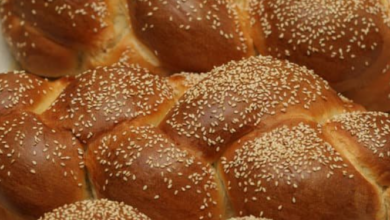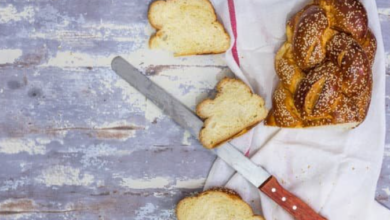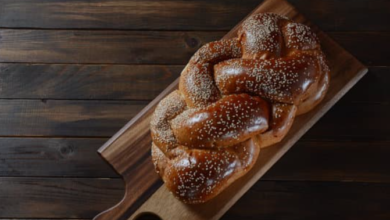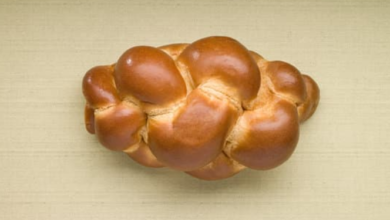Challah Vs. Pretzel: Which Bread to Choose?
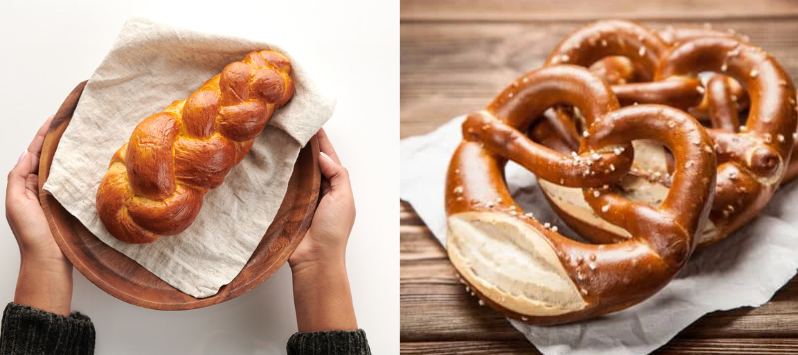
What To Know
- The pretzel’s origins are shrouded in mystery, but it is believed to have originated in Germany or Austria in the 15th century.
- Brioche contains butter and milk, giving it a richer, more buttery flavor and a slightly denser texture than challah.
- Lye is a strong alkaline solution that reacts with the proteins in the dough, forming a chemical bond that gives pretzels their unique characteristics.
When it comes to the world of baked goods, two classic contenders stand out: challah and pretzel. Both boast unique flavors, textures, and cultural significance. But which one deserves the title of bread royalty? In this comprehensive guide, we’ll delve into the depths of challah vs pretzel, exploring their origins, ingredients, preparation methods, and culinary applications.
Origin and History
Challah:
Challah is a traditional Jewish bread that originated in Eastern Europe. It holds a central place in Jewish rituals, particularly on the Sabbath and holidays. The word “challah” comes from the Hebrew word “challah,” meaning “portion,” as it was the portion of dough set aside for the priests in ancient times.
Pretzel:
The pretzel’s origins are shrouded in mystery, but it is believed to have originated in Germany or Austria in the 15th century. The twisted shape is said to symbolize the arms of a praying monk, and the three holes represent the Holy Trinity.
Ingredients
Challah:
Challah is made with simple ingredients: flour, water, yeast, eggs, sugar, salt, and sometimes oil. The high egg content gives it a rich and slightly sweet flavor.
Pretzel:
Pretzels are made with flour, water, yeast, salt, and lye. Lye is a strong alkaline solution that gives pretzels their distinctive brown crust and chewy texture.
Preparation Methods
Challah:
Challah dough is typically kneaded by hand or using a stand mixer until it becomes smooth and elastic. It is then braided into various shapes, such as the traditional six-strand braid. After rising, it is baked in an oven until golden brown.
Pretzel:
Pretzel dough is also kneaded until smooth. It is then shaped into its iconic twisted form. Before baking, pretzels are dipped into a lye solution, which gives them their characteristic crust. They are then baked in an oven until they reach a deep golden brown color.
Flavor and Texture
Challah:
Challah has a soft, fluffy interior with a slightly sweet flavor. The egg content gives it a rich, buttery taste.
Pretzel:
Pretzels have a chewy, slightly salty exterior and a dense, doughy interior. The lye solution creates a distinctive alkaline flavor that complements the saltiness.
Culinary Applications
Challah:
Challah is a versatile bread that can be enjoyed in various ways. It is commonly used for French toast, sandwiches, and challah stuffing.
Pretzel:
Pretzels are primarily consumed as a snack or appetizer. They can also be used in salads, soups, and sandwiches.
Nutritional Value
Challah:
Challah is a good source of carbohydrates, protein, and fiber. It also contains several vitamins and minerals, including vitamin B12, niacin, and iron.
Pretzel:
Pretzels are a good source of carbohydrates and fiber. They also contain some protein and vitamins, but they are generally less nutrient-dense than challah.
Which One to Choose?
The choice between challah and pretzel ultimately depends on personal preferences. If you prefer a soft, sweet bread with a rich flavor, challah is an excellent option. If you enjoy a chewy, salty snack with a distinctive alkaline taste, pretzel is the way to go.
Key Points: A Tale of Two Breads
Challah and pretzel, two culinary icons with their own unique charms, offer a captivating contrast in the world of bread. While challah embodies the essence of tradition and comfort, pretzel represents the allure of a salty, savory treat. Whether you prefer the sweetness of challah or the tanginess of pretzel, there’s no denying the appeal of these timeless bread creations.
What You Need to Know
1. What is the difference between challah and brioche?
Challah and brioche are both enriched breads, but they differ in ingredients and texture. Brioche contains butter and milk, giving it a richer, more buttery flavor and a slightly denser texture than challah.
2. Can I make challah without eggs?
Yes, it is possible to make challah without eggs. However, the eggs contribute to the richness and flavor of the bread, so the resulting challah may be less flavorful.
3. Why are pretzels dipped in lye?
Pretzels are dipped in lye to create their distinctive brown crust and chewy texture. Lye is a strong alkaline solution that reacts with the proteins in the dough, forming a chemical bond that gives pretzels their unique characteristics.
4. How long does challah stay fresh?
Freshly baked challah can stay fresh for up to 3 days at room temperature or 5 days in the refrigerator. To extend its shelf life, you can freeze challah for up to 3 months.
5. How do I reheat a pretzel?
To reheat a pretzel, wrap it in aluminum foil and warm it in a preheated oven at 350°F (175°C) for 5-7 minutes, or until heated through.
